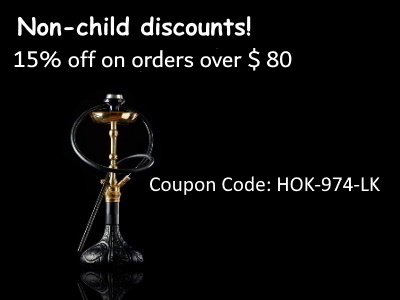Lidocaine spray is applied:
- stomatology and maxillofacial surgery: anesthesia of the injection site of medicament before local anesthesia, anesthesia during the opening of superficial abscess, removal of mobile milk teeth and fragments of bones, suture on mucous membranes; gum anesthesia for fixing of a crown of tooth or a bridge-like denture; medicament is used during manual or tool removal of a dental calculus or at the section of the increased interdental nipples for reduction or suppression of a hyper sensitive deglutitory reflex; at removal of a print of dentition or at placement of a x-ray film, medicament can be used only when elastic impression materials are used; children can use medicament at frenectomy and removal of cysts of sialadens; removal of superficial benign tumors of a mucous membrane;
- otolaryngology: in case of treatment of nasal bleedings before electrocaustic, septectomy and a resection of nasal polyps; to apply also before tonsilectomy to suppression of an emetic reflex and anesthesia of the place of an injection; as additional anesthesia before opening of peritonsillar abscess or before a puncture of a Highmore's bosom; anesthesia before washing of a Highmore's bosom;
- endoscopic and tool researches: throat anesthesia before introduction of various tubes through a nose or a mouth (gastroduodenal probe, the probe Sengstakena); replacement of a tracheotomic tube;
- obstetrics and gynecology: crotch anesthesia for performance of an epiziotomiya; removal of seams; anesthesia of the surgery field at vaginal operations or neck of the uterus surgeries;
- dermatology: anesthesia of skin and mucous membranes at small surgical interventions.
Structure
Active ingredient - lidocaine (1 bottle contains lidocaine 3.8 g; one dose contains lidocaine 4.8 mg).
Excipients: ethanol of 96%, propylene glycol, peppermint oil.
Contraindication
- hypersensitivity to medicament components and also to other amide mestnoanesteziruyushchy medicines; use of medicament is contraindicated to
- in stomatology before use of plaster because of danger of aspiration.
Route of administration
For external use.
Remove a cap, attach the valve doser and before the first use fill a bottle pomp with solution (press several times a pomp before emergence in aerosol air).
If the bottle with spray was not used byfor a long time, the pomp, perhaps, should be filled repeatedly.
Dose of medicament depends on indications and the size of the surface which is subject to anesthesia.
At each dispersion of one portion of spray on a surface 4.8 mg of lidocaine (one dose) are thrown out.
to avoid high concentrations in blood plasma, it is important to apply the smallest dose which provides satisfactory effect.
Approximate doses at various indications (a dose - the number of pressing):
- stomatology - 1-3;
- maxillofacial surgery - 1-4;
- otolaryngology - 1-4;
- endoscopy - 2-3;
- obstetrics - 15-20;
- gynecology - 4-5;
- dermatology - 1-3.
are there been Usually enough by 1-2 squirts though in obstetrics apply 15-20 squirts and more (the maximum dose - 40 squirts / 70 body weight kg).
by means of the cotton plug impregnated with this drug, medicine it is possible to apply on big surfaces.
Use to children: in stomatology or maxillofacial surgery children can apply Lidocaine spray by drawing by a tampon that allows to avoid risk of inhalation of medicament and burning sensation which usually acts as side effect of drug. Children up to 2 years can use medicament in the same way. Drug is not recommended to be used for local anesthesia before tonsilectomy and adenotomy to children up to 8 years. Suppressing a pharyngeal reflex and reaching a throat and a trachea (risk of aspiration), lidocaine suppresses a tussive reflex that can lead to developing of bronchial pneumonia.
Pregnant
Strictly controlled clinical trials of safety of use of medicament during pregnancy were not conducted by
Feature of use
, however "Lidocaine" was applied for a long time, and it did not do harm to health of the patient. In preclinical trials the toxic impact of lidocaine on fetation was not revealed. In case of lack of safer method of treatment Lidocaine spray, it is possible to apply also during pregnancy. Drug is removed byin breast milk, however at use of usual therapeutic doses the marked-out amount of medicament it scanty that it does not do harm to the child who is on chest feeding.
DriversConsidering
that sensitive patients at use of medicament can have side reactions from the central nervous system (excitement, a depression, nervousness, dizziness, drowsiness, spasms, a loss of consciousness, paralysis of respiratory organs), for the period of administration of medicament it is necessary to refrain from control of vehicles and other works demanding concentration of attention. Overdose
Symptoms: the increased sweating, pallor of integuments, dizziness, a headache, illegibility of visual perception, sonitus, a diplopia, a lowering of arterial pressure, bradycardia, arrhythmia, drowsiness, a fever, numbness of extremities, concern, spasms, shock, a methemoglobinemia, cardiac arrest.
Treatment In case of need should provide towith
access of fresh air, supply of oxygen and/or performing artificial respiration.
Spasm, arising owing to overdose, it is necessary to eliminate by means of a suktsinilkholin (1 mg/kg of body weight) and/or diazepam (1 mg/kg of body weight intravenously). As suktsinilkholin can cause an apnoea, only the experts having experience of carrying out an endotracheal intubation and treatment of patients with an apnoea can work with it. It is also possible to apply barbiturates of short action, thiopental. At emergence of symptoms from a cardiovascular system (bradycardia, disturbance of conductivity) it is necessary to appoint atropine (intravenously 0.5-1 mg) and sympathomimetics. At fibrillation of ventricles and cardiac arrest immediate holding resuscitation actions is shown.
Side effects
Local effects: at use of lidocaine there can be a burning sensation which after emergence of the anesthetizing effect disappears (within one minute); in the site of application of medicament the tranzitorny erythema, hypostasis and decrease in sensitivity can be observed.
Allergic reactions: including: an enanthesis, an itching, urticaria, a Quincke's disease, a bronchospasm, in extremely hard cases - shock; in case of reactions of hypersensitivity the use of medicament should be stopped.
System effects: if this drug, is applied according to the instruction, the frequency of development of system effects is extremely low as it amount of active agent which can reach blood circulation is very small. At use of high doses and in case of fast absorption of lidocaine or at hypersensitivity, an idiosyncrasy or decrease in shipping such side effects can develop:
- from the central nervous system: excitement, depression, nervousness, dizziness, drowsiness, spasms, loss of consciousness, paralysis of respiratory organs;
- from a cardiovascular system: arterial hypotension, myocardial infarction, bradycardia, cardiac arrest.
to Store
at a temperature not above 25 °C, out of children's reach.
Expiration date - 5 years.
| Characteristics | |
| Active ingredients | Lidocaine hydrochloride |
| Amount of active ingredient | 100 mg/g |
| Applicant | Egis |
| Code of automatic telephone exchange | D04AB01 Lidocaine |
| Interaction with food | It doesn't matter |
| Light sensitivity | Not sensitive |
| Market status | Generic-generic |
| Origin | Chemical |
| Prescription status | According to the prescription |
| Primary packing | bottle |
| Producer | EGIS PHARMACEUTICAL PLANT OF CLOSED JOINT STOCK COMPANY |
| Quantity in packing | 38 g |
| Release form | spray for external use |
| Route of administration | External |
| Sign | Import |
| Storage temperature | from 15 °C to 25 °C |
| Trade name | Lidocaine |
Lidocaine spray of 10% fl. 38 g
- Product Code: 181742
- In Stock
- Ready to ship
-
$41.59
































 This product is bought 51 people.
This product is bought 51 people.